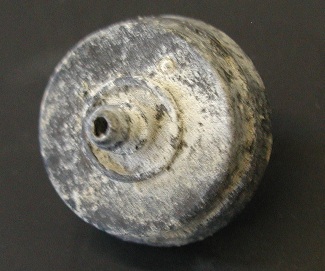Thermophilic Microorganisms in Biofilms from Greenhouse-Enclosed drip Irrigation Systems

Due to the deficiency in hydric resources prevailing in the Mediterranean area, agricultural practices have progressively shifted towards the use of drip irrigation, also called trickle or microirrigation, as a tool to optimize water utilisation as well as to improve control of water delivery to the crops due to its high irrigation efficiency. Drip irrigation is particularly suitable for wastewater reuse because it minimises the health risks to farmers and consumers due to the little contact with wastewaters. However, the usage of reclaimed water for drip irrigation is often associated to clogging events that impair proper operation of the system. When clogging occurs, more than 90% of the accumulated material has a biological origin. In most cases, the clogging process is usually initiated by bacterial biofilms.
In this work, we describe the microbial communities forming biofilms in the irrigation systems (drippers and pipes) of an experimental greenhouse in Almería, SE Spain, used to grow a tobacco crop (Nicotiana tabacum) using two different qualities of water. One type of water corresponded to the secondary effluent from the local wastewater treatment plant (WWTP) of El Ejido (Almería, Spain), and the second consisted of the tertiary effluent from the El Toyo WWTP (Almería, Spain).
Previous studies in this experimental greenhouse showed that the irrigation system was prone to develop biofouling and clogging of the drippers. In order to gain a better understanding of this issue, we characterised the composition of these biofilms by using a molecular tool called Denaturing Gradient Gel Electrophoresis (DGGE), useful to obtain fingerprints of natural microbial communities and to identify the more abundant members of these communities.
The most remarkable feature of all biofilms was that regardless of water origin, sequences belonging to Firmicutes were prevalent and that almost all sequences recovered had some similarity to thermophilic microorganisms, namely microorganisms adapted to growing in high temperature environments. The fact that these microorganisms were not present in high amounts in the incoming water indicated that conditions within the irrigation infrastructure, specifically high temperatures, selected these populations. Mainly, sequences were closely related to potential spore-forming organisms, which might constitute a problem when attempting to control biofilm formation through biocides, since endospores are highly resistant to the action of disinfectants.
As a consequence of the lack of information on the type of organisms developing biofilms in this particular kind of installations, these pioneer results provide useful information to assess the risk they might suppose for the crops involved, as well as contribute to improving management strategies to minimise the problems associated with biofouling in microirrigation.
References
Sánchez, Olga; Ferrera, Isabel; Garrido, Laura; Gómez Ramos, Maria del Mar; Rodríguez Fernández-Alba, Amadeo; Mas, Jordi. Prevalence of potentially thermophilic microorganisms in biofilms from greenhouse-enclosed drip irrigation systems. Archives of microbiology 196(3): 219-226. 2014. doi: 10.1007/s00203-014-0957-3.

